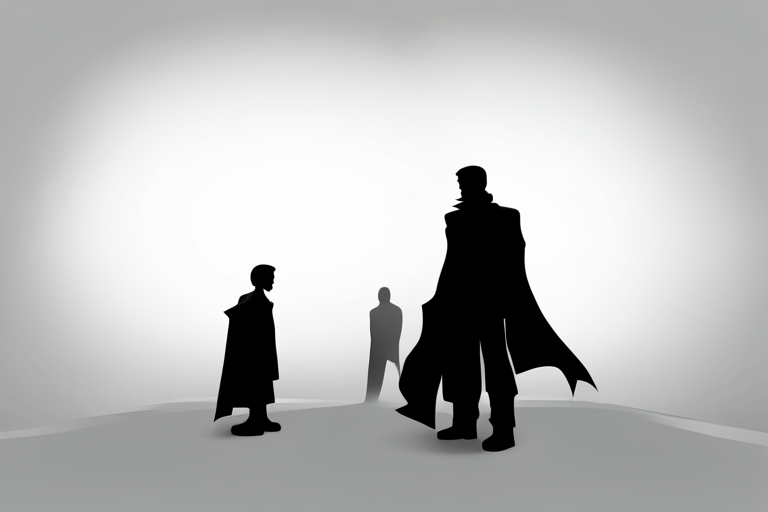
Ever started reading a book or watching a movie and found yourself thinking, I’m all in on this character’s story? That’s the magic of a well-crafted protagonist—they draw us in, make us care, and take us on a journey that sticks with us long after the final page or scene.
When I first started writing fiction, I thought a protagonist just needed to be “likable.” Turns out, that’s not always the case. What really matters is that they feel real, driven, and dynamic. Whether they’re heroes, antiheroes, or just ordinary people in extraordinary situations, the protagonist is the emotional anchor of every story.
Let’s break down who they are, what makes them compelling, and how their journey shapes the entire narrative.
🧍 What Is a Protagonist?

In storytelling, the protagonist is the main character—the one we follow through the central plot. They’re the person whose choices, growth, and challenges form the core of the story.
They aren’t always heroic. They aren’t always right. But they are always the one the story revolves around.
Classic examples of protagonists:
-
Harry Potter in Harry Potter
-
Elizabeth Bennet in Pride and Prejudice
-
Katniss Everdeen in The Hunger Games
-
Walter White in Breaking Bad (yes—even antiheroes count!)
The protagonist doesn’t have to be morally perfect—but we need to be emotionally invested in their outcome.
🔁 The Protagonist’s Journey: More Than Just Plot
A great protagonist doesn’t just move through the plot—they’re changed by it. Their story often mirrors the classic hero’s journey, or follows an internal arc of transformation.
Here’s a typical knowledge structure:
-
Introduction – We meet them in their “normal” world.
-
Inciting Incident – Something disrupts their status quo.
-
Rising Conflict – They face challenges and grow through struggle.
-
Climax – A major choice or revelation changes everything.
-
Resolution – We see how they’ve changed—or failed to.
This doesn’t have to be a fantasy quest. It could be a teenager dealing with family drama, a lawyer questioning their ethics, or a teacher learning how to reach a student. What matters is the internal change.
🧠 What Makes a Protagonist Compelling?
In my experience—both as a reader and a writer—the best protagonists share a few common traits:
✅ 1. Clear Motivation
We don’t have to agree with their goals, but we need to understand what drives them.
✅ 2. Relatable Flaws
Perfect characters are boring. Flaws make them real—and make their growth meaningful.
✅ 3. Agency
They make decisions. They drive the action. Even if the world pushes back, they fight forward.
✅ 4. Change Over Time
Great protagonists grow, fail, adapt, or transform. Static characters rarely hold our attention.
🆚 Protagonist vs. Antagonist
These two are often in direct conflict. While the protagonist drives the story forward, the antagonist creates the obstacles they must overcome.
But remember: not all antagonists are villains. Sometimes the antagonist is:
-
A rival (like Draco Malfoy)
-
A system (like the Capitol in The Hunger Games)
-
Even the protagonist’s own fears or flaws
Conflict fuels character development—and it’s the tension between protagonist and antagonist that makes stories unforgettable.
📝 Writing a Strong Protagonist
If you’re working on a story of your own, here are a few things I’ve learned through trial and error:
💡 Ask: “What do they want—and what’s in their way?”
This simple question keeps your story focused and your character active.
🎯 Give them stakes
Why does this journey matter to them? What happens if they fail?
🔍 Let them make mistakes
The more they mess up, the more opportunities you have for growth, redemption, or tragedy.
🧱 Build their world around their arc
Supporting characters, settings, and events should all challenge or support your protagonist’s change.
📚 Favorite Protagonists That Nail It
Let’s shout out some protagonists that stick with me:
-
Atticus Finch (To Kill a Mockingbird) – A quiet strength rooted in integrity
-
Miles Morales (Spider-Man: Into the Spider-Verse) – Growth, humor, and heart
-
Jo March (Little Women) – Fiercely independent, deeply human
-
Amir (The Kite Runner) – A flawed journey of guilt and redemption
Each of these characters evolves. Each is deeply personal. And each one left me thinking long after their stories ended.
✅ Final Thoughts: The Protagonist Is the Heart of the Story
You don’t need a perfect character. You need a real one. Someone who wants something, fights for it, and learns along the way.
Whether you’re crafting your own fiction or analyzing literature in class, understanding the protagonist’s role and journey gives you a deeper connection to the story. Because through their struggle, we often find reflections of our own.
And that’s what great storytelling is all about.






